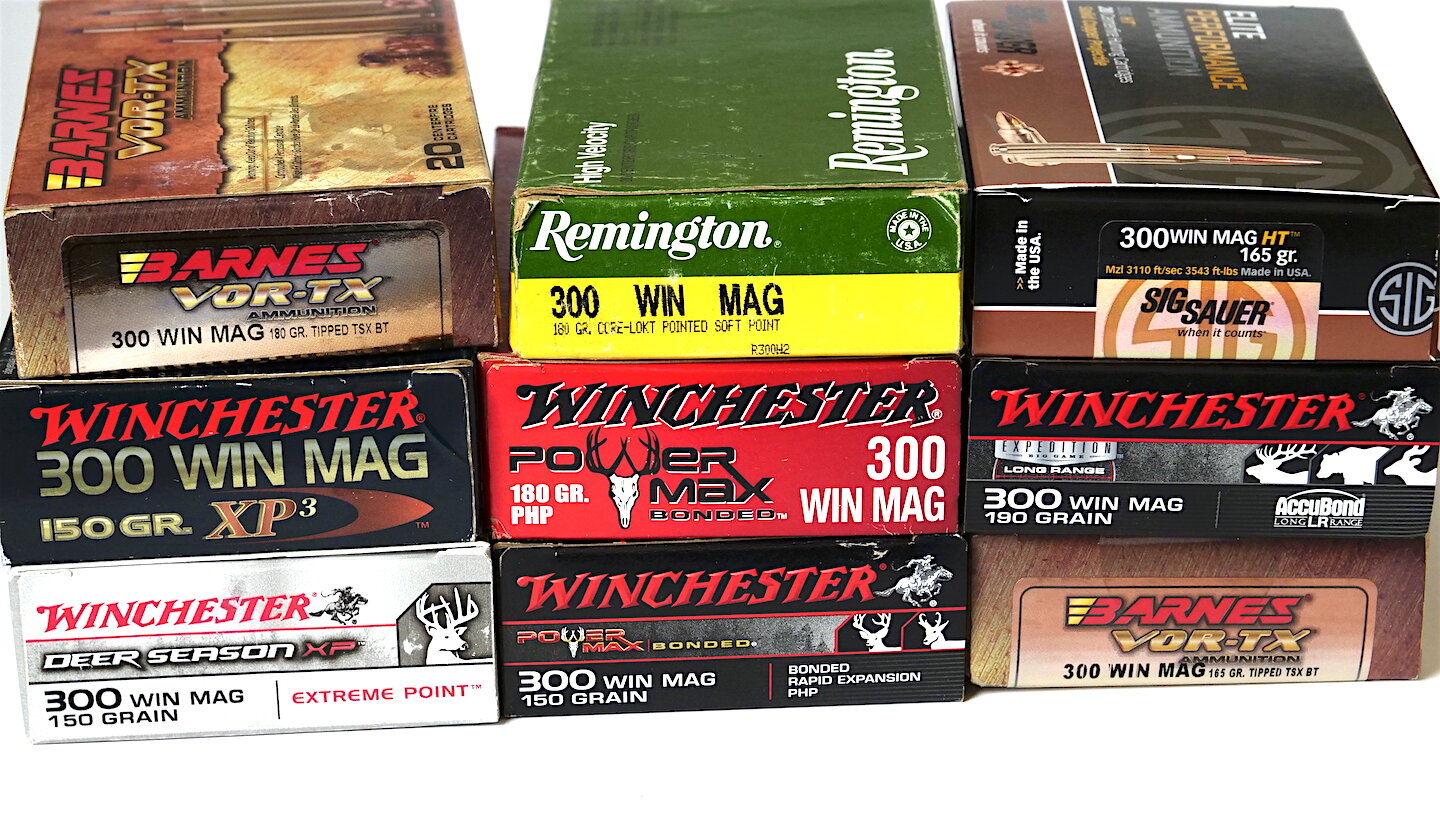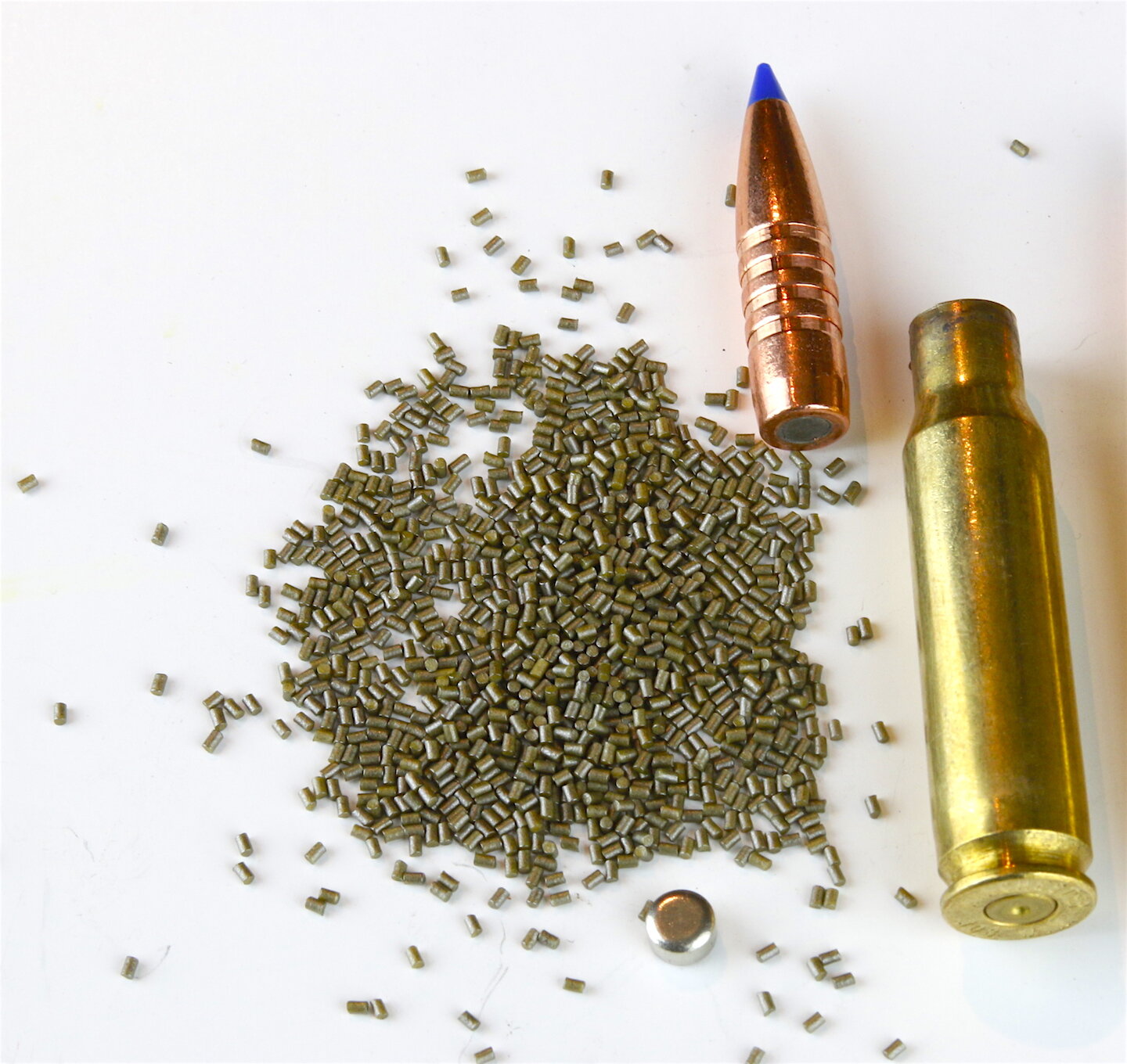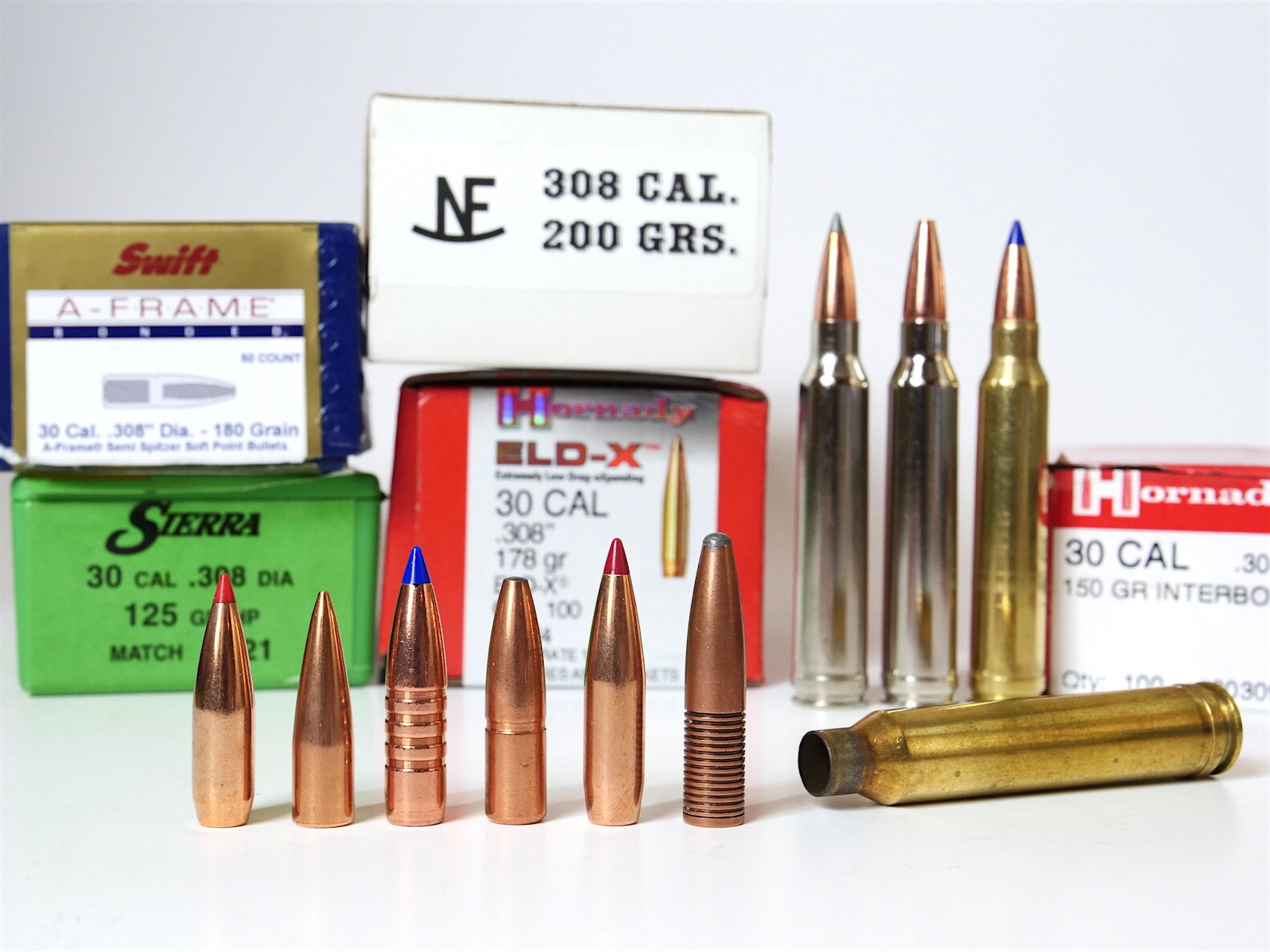Why All 300 Winchester Magnums Same Length?
Why are 300 Winchester Magnums with 150-grain bullets the same length as 300 Winchester Magnums with 220-grain bullets? And why aren't all bullets accurate in all rifles?
Image shows seven different 300 Winchester Magnums with various bullet weight, all the same length.
The bullet is just one part of the cartridge. Like an iceberg, most of it is hidden underwater (inside the brass case.)
Cartridge overall length (COL) is standardized so all brands of ammo fit all makes of rifles.
A barrel's rifling twist must be fast enough to spin stabilize bullets. The longer the bullet, the faster the twist must be. This article explains the gruesome details. The Q and A below explains why ammunition for all 300 Winchester Magnums is the same length.
Reader Asks "Why Are 300 Winchester Magnums 200-grain Bullets The Same Length As 150-grain Bullets?"
A reader recently wrote: “Ron, I have a Ruger M77 Mark II in 300 Win Mag with 1:10 twist. It stabilizes a 200 gr Hornady ELD-X bullet but it is not accurate. But it is quite accurate with 150 grain Federal Fusion. The bullets are the same length. Why is this so?”
It took me a few seconds to realize he was confusing cartridge length with bullet length. His confusion is due, in part, to our culture’s casual, colloquial references to cartridges as “bullets.” Cartoon character Elmer Fudd stopped shooting at Bugs Bunny once and said "Out of bullets." ("Buwwets" in Fudd-speak.) News reporters often reference “live bullets found on the scene,” and “handguns that hold up to 17 bullets!” What they mean, of course, is that live cartridges were found on the scene and that handguns hold up to 17 cartridges. Bullets are a critical part of those cartridges, of course, but only a part. Calling a complete cartridge a “bullet” results in the kind of confusion befuddling our reader above.
Photo shows a dimensional drawing of a 300 Winchester Magnum cartridge.
Parts Are Parts, and It Takes Several to Make Any Cartridge
At the risk of belaboring the obvious for many of you, let’s review what a centerfire cartridge consists of, then explain how this relates to accuracy:
1. A metallic case, usually brass. This is the “container” that holds the powder, the primer for igniting that powder, and the bullet the powder pushes from the barrel once the chemical reaction, sparked by ignition of high temperature primer powder, converts the solid gunpowder to a gas.
2. The primer. This is a tiny cup of thin metal, usually copper, containing compounds hyper-sensitive to sudden concussive strikes. It is inserted into a small cavity in the base of the cartridge called the primer pocket. When a firing pin strikes this primer cup, it squeezes the metal against an internal triangle of metal called an “anvil.” The compound crushed between these metals then ignites, shooting a tiny but extremely hot flame through a flash hole in the case head. This raises the temperature of the main powder charge, causing it to oxidize (burn.) The primer is the modern equivalent of the flint and pan on an old flintlock muzzleloader.
3. The powder. Smokeless gunpowder is a nitrocellulose formulation of flakes, tiny discs, or short, thin, extruded cylinders or pellets that look a lot like pieces of pencil lead (graphite.) These are coated with various chemicals to enhance or slow the rate at which they burn. Extruded pellets can include holes as another method for controlling burn rate. When smokeless powder is ignited, it is converted into a gas which fills up much, much, mush more space than the powder did. Since this rapidly expanding gas is confined within the chamber and narrow barrel of the gun, it creates incredible pressures that seek release. Ideally this is achieved by following the path of least resistance -- pushing the bullet out of the muzzle.
4. The bullet. Here is the projectile for which all these other components have been assembled. The bullet can be a simple round ball, an elongated cylinder, or a modern, sleek, tapered bullet maximized to minimize air drag and fly a long way. The bullet is pressed very tightly into the mouth or neck of the metallic cartridge case, and this is where our reader’s confusion arises -- bullet seating depth.
300 Winchester Magnums Require Standard Cartridge Length to Fit All Rifles
Because bullets can vary significantly in weight and shape, they vary significantly in length. But, because cartridges must be standardized to fit within the magazines and barrel chambers of many, many different rifles, the industry establishes something called Cartridge Overall Length (COL.) This is the maximum length the cartridge cannot exceed in order for it to properly fit all these various rifle actions, chambers and magazines. It is measured from the cartridge base to the tip of any bullet pushed into its neck.
Mechanical function (feeding, firing, etc.) is not compromised by any part of the bullet held inside the case, so manufacturers seat bullets as deeply as necessary to match COL. Short bullets might have half their length inside the neck of the case. Longer bullets might have three-quarters their length poking into the powder reservoir behind the neck. Regardless how long the bullet actually is, only a small portion of it will be visible. This is why our reader’s loaded cartridges measured the same from base to bullet tip with both 150-grain and 200-grain bullets.
300 Winchester Magnums' Bullet Length Impacts Accuracy
As for the reader's accuracy issue: the longer the bullet, the faster it must spin in order to stabilize. Rifle barrels are cut or formed with twisting grooves (rifling) at rates common to specific cartridges. A common rifling twist rate for many 30-caliber cartridges is one complete turn in ten inches of barrel length (1-10".) Most twist rates were established in the 20th century before extremely long, sharply tipped, boat tailed bullets existed. As a result, your 270 Win., 30-06 Springfield, 243 Win. or 25-06 Rem., etc. may not twist quite fast enough to stabilize some of today's long, heavy, high B.C. bullets. If your rifle shoots light bullets accurately, but extremely heavy bullet inaccurately, they could be spinning near the ragged edge of stability. If you notice holes in your paper targets that are slightly oblong or egg shaped, the bullets that punched them were poorly stabilized.
This doesn’t mean your rifle barrel can’t stabilize all heavy bullets, just long ones. A 1-10” twist rate, for instance, might not stabilize a 220-grain VLD bullet, but could stabilize a 220-grain round nose bullet because the round nose concentrates is mass within a shorter length. It’s the length that requires increased twist rate, not the weight. Similarly, if Nosler made a 200-grain, all-copper E-Tip bullet in .308", a 1-10" twist wouldn't stabilize it. Because copper's specific gravity (density) is so much lighter than lead, the bullet would have to be much longer than a 200-grain lead core bullet.
Like many serious rifle shooters in the 21st century, Ron Spomer appreciates the ballistic benefits of long, high B.C. bullets. He hopes that rifle manufacturers will soon begin offering faster twist barrels in many popular chamberings.











